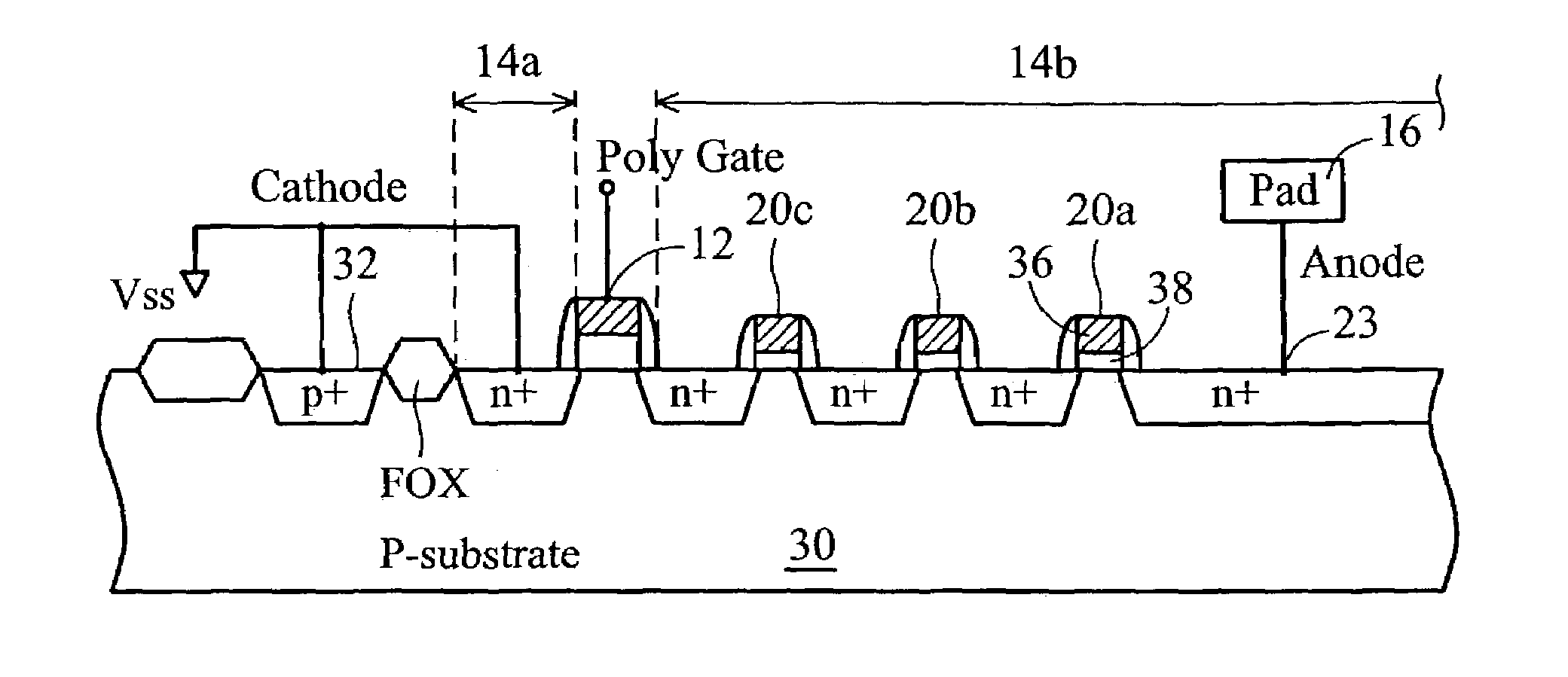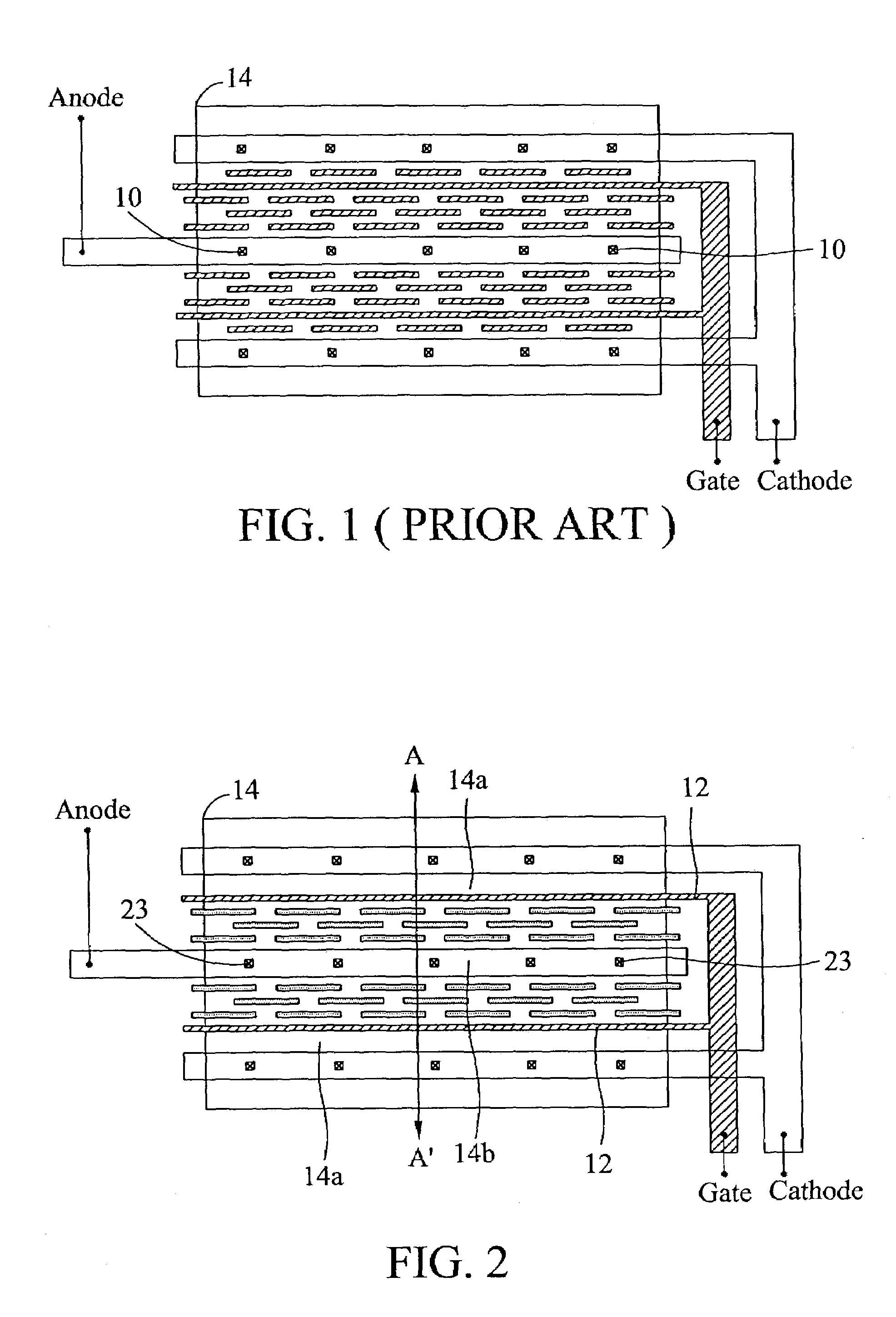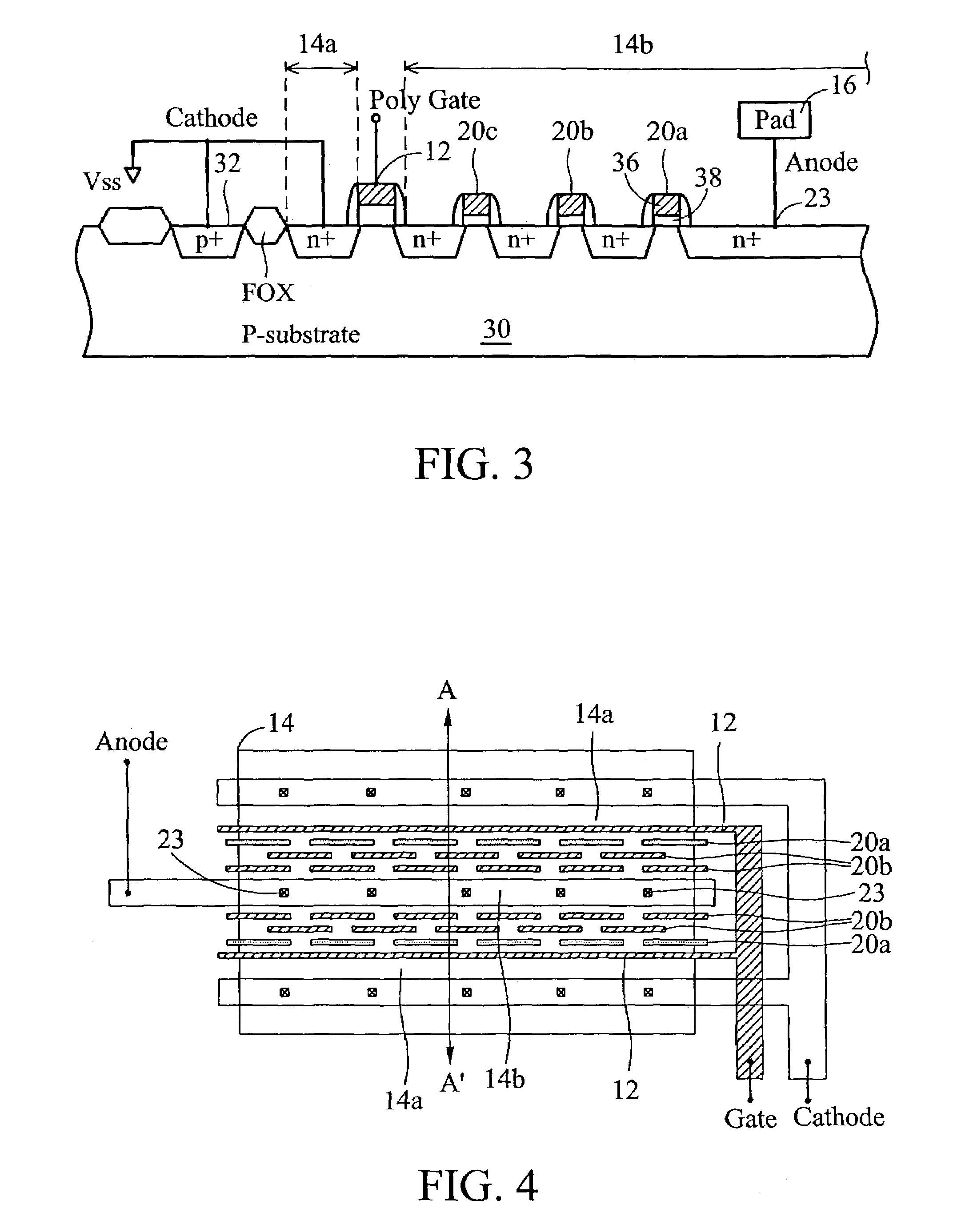ESD protection devices and methods for reducing trigger voltage
a protection device and trigger voltage technology, applied in the direction of solid-state devices, resistors, basic electric elements, etc., can solve the problems of local heating, affecting the esd protection level, and becoming more vulnerable to the impact of external environment, so as to achieve a tighter trigger mechanism and improve the effect of esd protection level
- Summary
- Abstract
- Description
- Claims
- Application Information
AI Technical Summary
Benefits of technology
Problems solved by technology
Method used
Image
Examples
first embodiment
[0038]FIG. 2 shows a layout view of an NMOS structure according to the present invention. FIG. 3 is a cross-section of the NMOS structure in FIG. 2 along a portion of line A–A′.
[0039]The ESD protection device in FIG. 2 is a multi-finger-type NMOS with two poly gates 12 coupled together. The gate oxides of these two poly gates 12 are thick oxide gates. An active region 14 is surrounded by a field oxide (FOX) isolation region, which is typically formed by local oxidation (LOCOS) or shallow trench isolation (STI). The active region 14 is typically ion-implanted by negative-type ions and then annealed by thermal cycles to form heavily n-doped (n+) layers. The ion implant is blocked by any poly gate, poly segment or field oxide region present within the active region. Within the active region 14, two channel regions under the poly gates 12 are formed. The portion of the active region 14 between the two poly gates 12 is referred to as a drain diffusion region 14b, serving as an anode and ...
second embodiment
[0044]FIG. 4 shows a layout view of an NMOS structure with islands of different gate oxide thickness according to the present invention. FIG. 5 is a cross-section of the NMOS structure in FIG. 4 along a portion of line A–A′.
[0045]Not all the islands in the ESD protection device need thin gate oxides. Islands with thin gate oxides have two purposes: one is quicker triggering of the NMOS to discharge ESD current, and the other is dispersing the current flow in the drain diffusion region 14b. The former purpose can be achieved even though there is only one island with a thin gate oxide overlaying the drain diffusion region. The latter purpose can also be achieved even when all the islands have thick gate oxides. Thus, the islands in the drain diffusion region 14b can have different gate oxides. FIGS. 4 and 5 depict this concept, where the islands 20a in the rows nearest the control gates have thin gate oxides for quicker triggering and the other islands 20b have thick gate oxides only ...
third embodiment
[0046]FIG. 6 shows a layout view of a field device ESD protection structure with strips of field gate oxides over channels between adjacent anode-coupled and cathode-coupled diffusion regions according to the present invention. FIG. 7 is a cross-section of the structure in FIG. 6 along a portion of line A–A′.
[0047]The invention can be applied not only to an NMOS with control gates, but also to a field-device ESD protection structure with stripes of field oxide 13 over channels, as shown in FIGS. 6 and 7. Note that the channel in FIG. 7 is the base region for a lateral npn bipolar device structure formed by the cathode-coupled diffusion region, the channel region, and the anode-coupled diffusion region. Some of the islands in FIGS. 6 and 7 have thin gate oxides, and others have thick gate oxides
PUM
 Login to View More
Login to View More Abstract
Description
Claims
Application Information
 Login to View More
Login to View More - R&D
- Intellectual Property
- Life Sciences
- Materials
- Tech Scout
- Unparalleled Data Quality
- Higher Quality Content
- 60% Fewer Hallucinations
Browse by: Latest US Patents, China's latest patents, Technical Efficacy Thesaurus, Application Domain, Technology Topic, Popular Technical Reports.
© 2025 PatSnap. All rights reserved.Legal|Privacy policy|Modern Slavery Act Transparency Statement|Sitemap|About US| Contact US: help@patsnap.com



